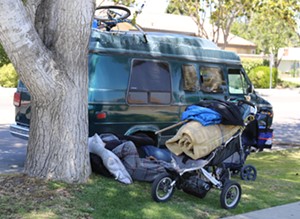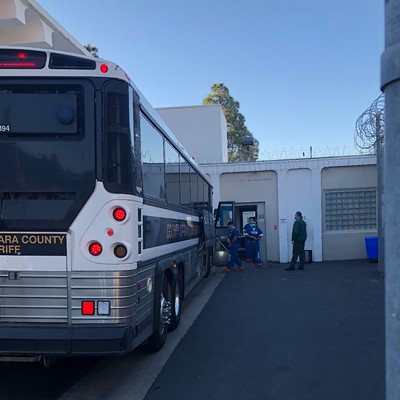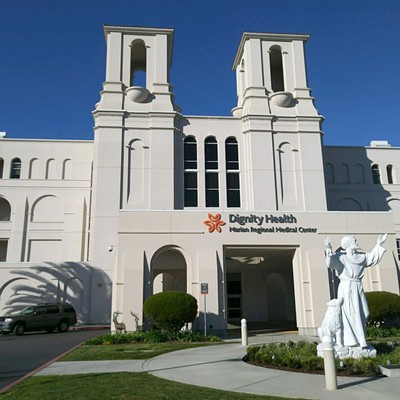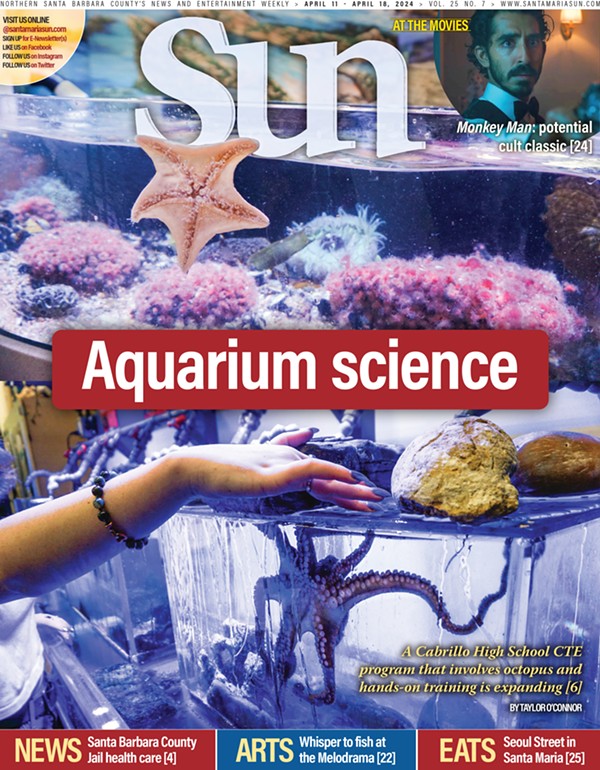A controversial plan to convert a Motel 6 on Santa Maria’s East Main Street into permanent housing for the homeless led to questions about the city’s ability to collaborate with Santa Barbara County on similar projects.
Fifth District Santa Barbara County Supervisor Steve Lavagnino asked to pull the project from the Board of Supervisors’ Jan. 25 consent agenda, saying that several city officials—including Santa Maria Mayor Alice Patino, Councilmember Etta Waterfield, and members of the Santa Maria Police Department—opposed the project because the city didn’t have the opportunity to present it to community members.
“We could continue to apply for the money, but I have come to believe without the city and the county working together, it’s just not going to happen,” Lavagnino said.
The Project Homekey project—led by the Santa Barbara County Housing Authority—aims to use nearly $18 million in state funding and $3.5 million from the county to renovate the Motel 6 into 75 residential units with six other rooms for resource offices and community spaces, according to the county staff report.

Santa Maria resident Andy Caldwell expressed his opposition to the project during public comment.
“I’ve never—in my 30 years here—seen the county launch a project with this potential for controversy without collaborating and consulting with the affected party. In this case, Santa Maria would lose bed tax and property tax,” Caldwell said. “The collegial thing to do, the respectful thing to do, is you should have asked first. This should have been agendized on the City Council prior.”
Lavagnino responded to Caldwell’s comments by explaining that there was a Jan. 31 deadline to apply for the state funding at a regional level. Missing that deadline would mean that the county has to compete with jurisdictions across the state for leftover funding.
“We did go speak with the city and hear their concerns, but the problem I see is there’s no solution or easy answer. If the Motel 6 on Main is not the place, then I don’t know where it is,” Lavagnino said. “We have to deal with these folks; we have to build—or remodel something that’s an existing building—to deal with the situation.”
Santa Maria City Councilmember Carlos Escobedo spoke during public comment, asking the county not to end the discussion.
“It’s one of the items that should be a conversation within the City Council meeting, and it’s worth having this in our agenda. I would like you guys not to close this opportunity,” Escobedo said.
The item returned to the board’s agenda on Feb. 1, and the application for funding included a letter of support from the city. While this project did make the state’s Jan. 31 deadline, Lavagnino told the Sun that he remained concerned about the potential for future collaboration between the city and the county.
The project
Project Homekey’s mission is to increase the supply of affordable housing in California by administering programs that provide grants and loans from both state and federal housing programs, according to California’s Department of Housing and Community Development website.
Homekey serves veterans, seniors, young families, people with disabilities, farmworkers, and individuals and families who are experiencing homelessness, the website states. The funding the county recently applied for is the second round of Homekey funding since the program started in 2020.
The Santa Barbara County Housing Authority—which operates as a separate entity from the county government and monitors several local affordable housing projects—is the Motel 6 project applicant. The Housing Authority currently oversees three affordable housing sites in Santa Maria and seven total in the county, said John Polanskey, the county Housing Authority’s director of housing development.
“[For] the second round of Homekey, we sent out feelers to the various brokers and came back with two prospective sites: the Super 8 in Goleta and the Motel 6 in Santa Maria. We were really happy that we had both a North and South County property—that would be great because the need is in both parts,” Polanskey said.
The Housing Authority is responsible for the coordinating services, but the city can provide services if it likes, he added.
“We look for whatever level of support from the city and from the police department in making sure people understand we want a safe and secure environment for everybody,” Polanskey said. “We’re still working with the city of Santa Maria.”
Back and forth
Lavagnino said he’s still working to get the Santa Maria City Council on board with the project, adding that he sees a complex road to collaboration.
“The city has a very skeptical eye when it comes to the county wanting to help. I don’t think their values align with the county values, so they are prone to be very skeptical any time that we try to collaborate,” Lavagnino said. “We’ve just run into the city of Santa Maria doing things differently than the county does, and they like it that way. There’s just not a lot of collaboration, I’d say.”
Santa Maria Mayor Patino said city staff is concerned about the project’s success because previous affordable housing renovation projects—like The Residences at Depot Street—have had eviction issues, criminal activity, and neighborhood disturbances, and the city fears the problems will repeat themselves at a different location.
“I would have been going against my duty if I hadn’t raised concerns,” Patino told the Sun. “We asked [the county] to go through the process as any other agency would, to make an application and go through the Planning Commission to rezone the property. The bottom line is the people of Santa Maria need to weigh in on this. I don’t think the [county] government should just do this.”
Patino said the city has not had the best information available, and is looking forward to further discussion for better understanding, and—hopefully—solutions.
“It’s going to be a mixed reaction, but you’ll find that people in Santa Maria are very compassionate and caring people that take the way they treat other human beings very seriously,” she said.
Lavagnino said the county adhered to the city’s requests, and the decision will ultimately fall onto the city officials.
“We are going to give them the veto power. If they vote to move forward, we will invest county dollars, but if the city leaders don’t want that, that’s fine as well. We will find another area to spend our dollars in the unincorporated areas of the county,” he said.
As of Feb. 11, there isn’t a date set for the county to present the project before the City Council, but Lavagnino said it will have to be within the next month.
“That also gives the opportunity for the public to weigh in as well. … The public will have the chance to speak at the City Council meeting, but at the end of the day, it’s going to be a decision of the City Council,” Lavagnino said. “There’s no golden choice, it’s not one [location] is better than the other, but I can’t live with the status quo. The homeless issue seems like it’s going unaddressed, and it’s impacting the residents of Santa Maria.”
Staff Writer Taylor O’Connor can be reached at [email protected].











